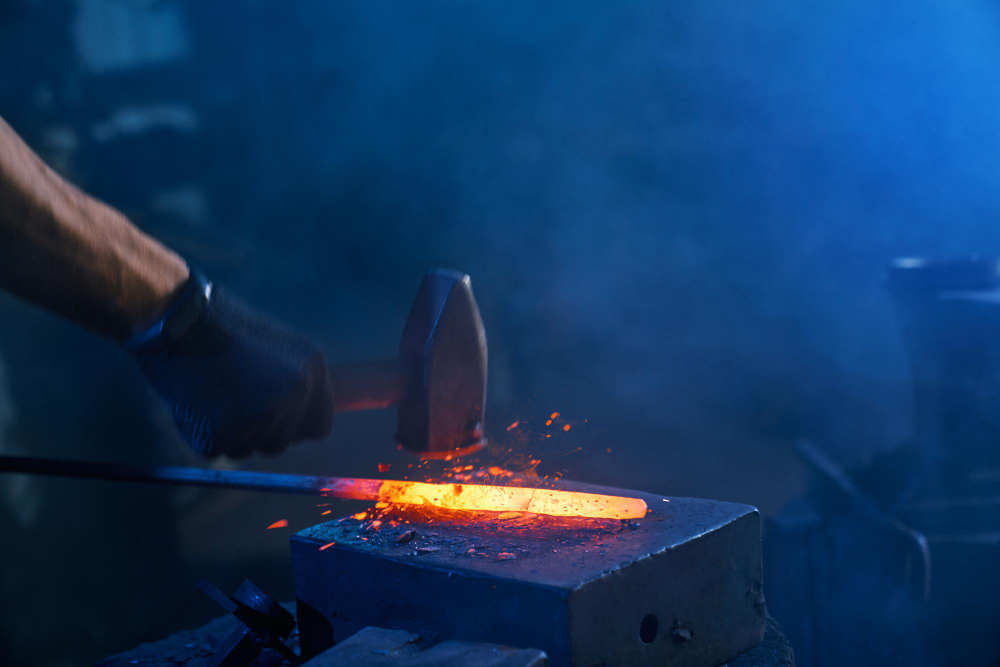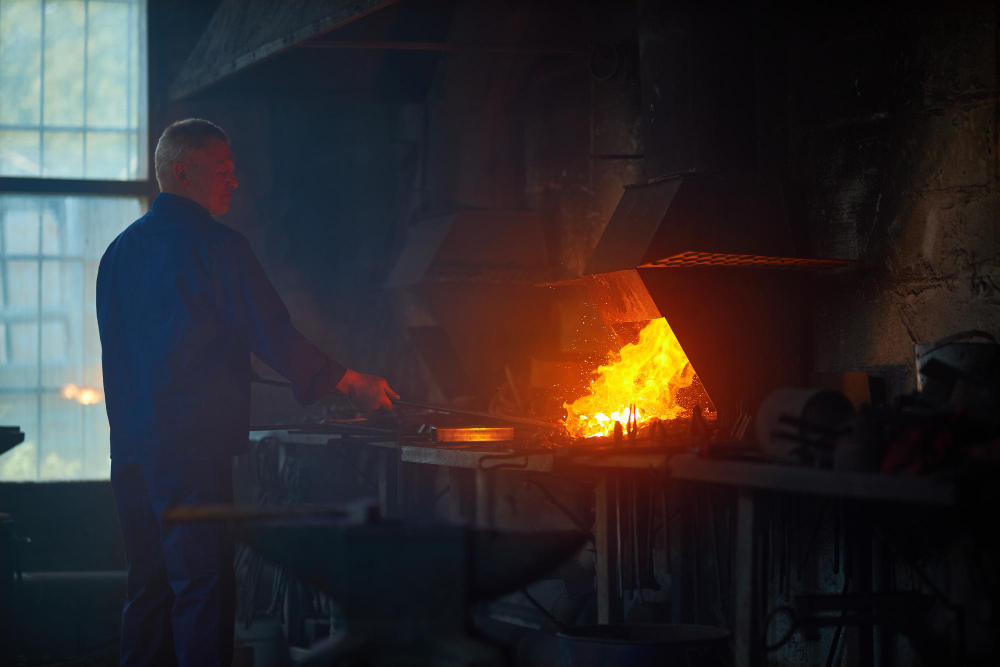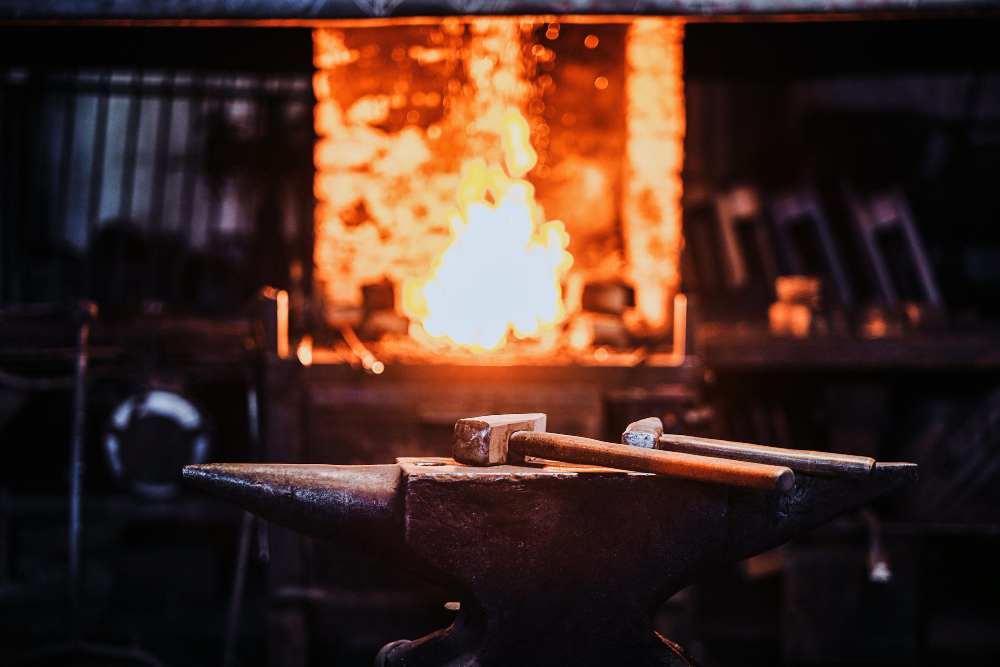Steel forging is a manufacturing process that involves the shaping of steel through the application of localized compressive forces. This technique utilizes the plasticity of steel when heated to high temperatures, allowing it to be molded into desired shapes with remarkable precision. The process typically begins with a solid piece of steel, known as a billet, which is heated until it reaches a malleable state.
What are the Processes of Steel Forging?
1. Heating the Steel
Before the forging process can begin, the steel needs to be heated to an appropriate temperature. The heating process is crucial to achieve the desired plasticity in the steel. The temperature required for forging depends on the type of steel and the desired final product. Once the steel reaches the optimal temperature, it becomes easier to manipulate and shape.
2. Applying Compressive Forces
After the steel has been heated to the proper temperature, it is placed on a die, which is a specialized tool used for shaping the steel. The die is designed with the desired shape of the final product in mind. The steel is then subjected to compressive forces using a mechanical or hydraulic press. These forces deform the steel, causing it to take the shape of the die.
3. Cooling and Finishing
Once the desired shape is achieved, the forged steel is allowed to cool gradually. This controlled cooling process, known as annealing, helps relieve internal stresses in the steel and enhances its mechanical properties. After cooling, the forged steel undergoes further finishing processes such as machining, grinding, and polishing to achieve the desired surface finish.
Reasons Why Steel Forging is Widely Utilized in Various Industries

1. Enhanced Structural Integrity
Steel forgings exhibit superior structural integrity compared to other manufacturing processes. The compressive forces applied during forging refine the grain structure of the steel, resulting in improved mechanical properties such as increased strength and toughness. This enhanced structural integrity makes forged steel components highly resistant to fatigue, impact, and wear, making them ideal for demanding applications.
2. Customization and Complexity
Steel forging offers tremendous flexibility in terms of customization and the ability to create complex shapes. The malleability of heated steel allows for intricate designs, precise dimensions, and tight tolerances. This enables manufacturers to produce components that meet specific requirements, even in industries with stringent standards and regulations.
3. Consistency and Reproducibility
Forging processes, when properly controlled, ensure a high level of consistency and reproducibility in manufactured steel products. The controlled application of compressive forces and the use of standardized dies result in minimal variation between individual components. This uniformity is particularly crucial in industries where interchangeability and reliability are paramount.
4. Metallurgical Advantages
steel forging also offers significant metallurgical advantages. The process refines the internal grain structure of the steel, aligning the grain boundaries and eliminating defects such as porosity and inclusions. This leads to improved material properties, including higher strength, increased resistance to corrosion, and better fatigue resistance. The resulting forged steel exhibits superior performance characteristics compared to cast or machined steel.
5. Cost-Effectiveness
While steel forging requires specialized equipment and skilled labor, it can be a cost-effective manufacturing process in the long run. The superior mechanical properties of forged steel often result in longer product lifespans, reducing the need for frequent replacements. the ability to produce complex shapes and reduce material waste contributes to cost savings. When considering the longevity and durability of forged steel products, the initial investment in forging proves to be a wise choice for many industries.
Application in Various Industries

1. Automotive Industry
The automotive industry heavily relies on steel forging for the production of critical components such as crankshafts, connecting rods, gears, and suspension parts. These components require high strength, reliability, and resistance to fatigue to withstand the demanding conditions of vehicle operation. Steel forging ensures that these parts meet the required specifications, contributing to the safety and performance of automobiles.
2. Aerospace and Defense
In the aerospace and defense sectors, where safety and reliability are of paramount importance, steel forging is a preferred manufacturing technique. Forged steel components are widely used in aircraft engines, landing gear systems, missile systems, and other critical applications. The superior strength, fatigue resistance, and dimensional accuracy of forged steel make it an ideal choice for ensuring the integrity of these high-stress components.
3. Oil and Gas Industry
The oil and gas industry operates in harsh environments that subject equipment to extreme temperatures, pressures, and corrosive substances. Forged steel is used in the production of valves, flanges, drilling equipment, and other components that need to withstand these challenging conditions. The exceptional mechanical properties of forged steel make it highly reliable and capable of performing in oil and gas exploration, extraction, and refining operations.
4. Construction and Infrastructure
In the construction and infrastructure sectors, where structural integrity and durability are crucial, steel forging is widely utilized. Forged steel components such as beams, columns, and connecting rods provide the necessary strength and stability for buildings, bridges, and other infrastructure projects. The ability of forged steel to withstand heavy loads, impacts, and vibrations ensures the longevity and safety of these structures.
5. Power Generation
The power generation industry relies on steel forging for the manufacturing of turbine components, generator shafts, and other critical parts. The high temperatures, pressures, and rotational forces involved in power generation require materials that can endure such extreme conditions. Forged steel’s exceptional mechanical properties and resistance to creep and thermal fatigue make it an ideal choice for power generation applications.
6. Manufacturing Equipment
Steel forging also plays a vital role in the manufacturing industry itself. The production of heavy machinery, industrial equipment, and tools often requires the use of forged steel components. The robustness, precision, and reliability of forged steel enable the efficient operation of manufacturing equipment, contributing to improved productivity and quality.
Frequently Asked Questions
1. What is the technique of steel forging?
Steel forging is a manufacturing process that involves shaping heated steel through the application of compressive forces using specialized dies. This technique enhances the structural integrity and mechanical properties of the steel, resulting in strong and durable products.
2. What are the advantages of steel forging over other manufacturing processes?
Steel forging offers enhanced structural integrity, customization options, consistency, and metallurgical advantages. It produces components with superior mechanical properties and is cost-effective in the long run due to increased product lifespans and reduced material waste.
3. What industries benefit from steel forging?
Steel forging is utilized in various industries, including automotive, aerospace and defense, oil and gas, construction and infrastructure, power generation, and manufacturing equipment.
4. Is steel forging a complex process?
Steel forging is a specialized manufacturing process that requires skilled operators and specialized equipment. While it may have some complexities, advancements in technology and the expertise of professionals have made the process more efficient and reliable.
5. How does steel forging contribute to the strength and durability of steel products?
Steel forging refines the internal grain structure of the steel, eliminating defects and aligning the grain boundaries. This results in improved mechanical properties such as increased strength, toughness, and resistance to fatigue. The controlled shaping process ensures that the forged steel products exhibit superior structural integrity and durability.
6. Can steel forging be used for both small and large components?
Yes, steel forging is a versatile technique that can be employed to produce both small and large components. The size of the component will determine the type of forging method used, such as open-die forging or closed-die forging. The flexibility of steel forging allows for the production of components of various sizes and complexities.
Conclusion
Steel forging is a cornerstone of the manufacturing industry, offering exceptional strength, durability, and reliability. Through the application of localized compressive forces, steel forging enhances the internal grain structure of the steel, resulting in superior mechanical properties. The significance of steel forging lies in its ability to produce strong and durable steel products that find applications in diverse industries such as automotive, aerospace, construction, and power generation.





































































